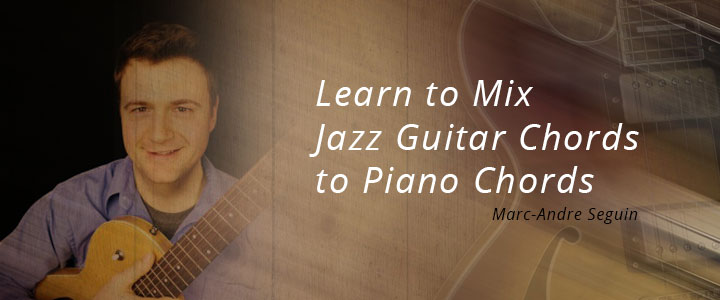Being a guitar player with a piano or keyboard player in your band can be one of the trickier situations to deal with in jazz. This mostly becomes a problem when we are discussing accompaniment or “comping.” Now, in my experience, most of the old-school cats will tell you that only one of you should be comping at a time. However, there are some opportunities for the two to have some interaction. There are some considerations to be observed when approaching this. A quick look at the keyboardist and you can decide who is going to comp for which soloist. Sometimes, the guitar player will be the main accompanist and sometimes it will be the keyboard player. Today, we will talk about a few of those including textures, rhythm, and voicings as a guitar player trying to add to what the keyboard player is already doing. It is important to always listen and only contribute when you feel that there is space for something. Many fellow “compers” will prefer it if you do not add anything to what they are doing. Therefore, it is important to check in with them once in a while and try to keep eye contact with your band mates in general.
Textures
One of the main issues with two instruments comping is the fact that the two players will likely playing different rhythms and different voicings, creating rhythmic and harmonic dissonance. However, one thing a guitar player can add without getting into too much trouble is small little textural details.
Say, for example, the pianist/keyboardist is comping somewhere in the middle register. With some active listening, the guitar player can determine this and maybe play around holding two or three note voicings in a higher register. You might also try breaking these notes up to create a harp-like texture. With regard to voicings, we will get into some of the available choices a little later, but this approach will make sure that you stay out of the way both, rhythmically and harmonically. It is also effective to consider where you are in the form of the tune if you decide to do this. In other words, it might add a bit of excitement to wait until the B section to try something like this. As with anything in music, the when and where of this sort of thing comes with experience and practice in a live setting.
Rhythm
In my opinion, this is the big one. Since the rhythmic aspect of comping is usually improvised, two compers will likely play different things at several points in the form. This can lead to a clunky, disorganized mess behind the soloist. I tend to lean towards laying out if you are not sure how to approach it, but there are moments where you might be able to chime in. For example, if the keyboard player plays a consistent pattern through a few bars of the A section, it might be a good moment for you to jump in for a few bars to match his pattern. Maybe you can try this with octaves or two/three-note voicings just to stay out of the way (more on that in a sec). In this situation, the main thing is to establish eye-contact so as to have some sort of indication that he wants you to jump in with him or drop back out.
Voicings
Ok, so I have discussed textural and rhythmic considerations. Now, we can go over which types of chords might be useful for those approaches. As with everything else that we have discussed thus far, the name of the game is staying out of the way. You are attempting to add a bit of color and excitement to what the keyboard player is already doing behind the soloist. There are a few ideas, however, that are almost surely fail-safes. Let’s go over some of these.
Shell Voicings – Shell voicings are voicings that use only the 1st, 3rd, and 7th of a chord. These are great for adding a little something to piano chords as they make sure that you stay out of the way of any major alterations such as #5, b9, etc.
Double Stops – Double stops are simply two notes played at the same time. In the case of adding something to a keyboardist’s comping, it’s pretty hard to go wrong with simple 3rds and 7ths.
Octave Double Stops – Wes Montgomery was famous for these, and if you have ever listened to any jazz guitar, you have probably run into it more than once.
Now, depending on how good your ear is, you might try something more sophisticated, but always remember that you would be taking a chance. There are moments, however, where it might be worth the risk. If, for example, you know that a particular chord in a tune is always played as an altered dominant chord, you can play around with different altered extensions.
Considerations
The key here is to listen intently. This is really one of the most important aspects of playing jazz music with other musicians. It is about having a conversation, and if you are not listening, you cannot adequately respond. It will take some time, but with some practice and attention to detail, you will develop a certain sensitivity to what a given situation needs and the best way to approach it. In general, it is important to remember that, in this situation, less is more. This is an easy thing to forget for less experienced players, but your band-mates will surely thank you for it.
In all honesty, the most ideal situation is one where you have a bit of rapport with the keyboardist and know some of his or her tendencies and vice-versa. I would not recommend these approaches in a jam session or at a gig with strangers as it can get pretty messy and possibly lead to some disagreements or disapproving faces.
